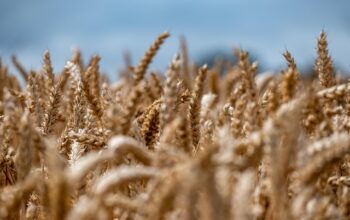Ontario farmers face diverse challenges requiring tailored farm fencing solutions. Traditional methods like wooden posts and chain link fences have limitations regarding cost and security. They are transitioning to cost-effective alternatives such as high-density polyethene (HDPE) and electric fencing systems, offering durability and efficiency. Regular maintenance is crucial for longevity, including cleaning, inspecting, and repairing damage, with specific treatments for wood, metal, and chain link fences.
Ontario’s agricultural sector faces unique challenges, demanding durable yet cost-effective farm fencing solutions. This article explores the diverse landscape and specific fencing needs of Ontario farmers. We delve into traditional options, highlighting their limitations, and present innovative alternatives that offer better value. Additionally, practical tips for implementation and maintenance ensure long-lasting fences. Discover how these strategies not only strengthen agricultural infrastructure but also contribute to the sustainability and profitability of Ontario’s farming community.
- Understanding Ontario's Agricultural Landscape and Fencing Needs
- Traditional Fencing Options and Their Limitations in Ontario
- Innovative and Cost-Effective Farm Fencing Solutions
- Implementation and Maintenance Tips for Long-Lasting Fence Systems
Understanding Ontario's Agricultural Landscape and Fencing Needs
Ontario’s agricultural landscape is diverse, encompassing vast expanses of farmland, smallholdings, and a range of climatic zones. This variability presents unique challenges and opportunities for farmers when it comes to choosing suitable farm fencing solutions. Each region within Ontario may require different types of fencing to protect crops, livestock, and natural resources, while also considering aesthetic appeal and long-term durability.
The need for cost-effective farm fencing is paramount for Ontario’s agricultural community. Farmers must balance the investment in fencing with the potential for unpredictable market fluctuations, environmental changes, and the ever-present goal of maximizing productivity. Therefore, selecting fencing materials that offer both strength and affordability is crucial to meeting the diverse needs of Ontario’s agricultural landscape.
Traditional Fencing Options and Their Limitations in Ontario
In Ontario, traditional farm fencing options like wooden posts and rails or chain link fences have long been the go-to choices for farmers. While they offer a certain level of protection, these methods come with several limitations that can impact both cost and effectiveness over time. Wooden fences, for instance, require regular maintenance to prevent rot and decay, leading to recurring expenses. Chain link fences, though durable, can be costly to install and are less aesthetically pleasing, which might deter from the overall look of a farm.
Furthermore, traditional fencing methods may not always provide adequate security against wildlife or invasive species, requiring additional measures like electric fencing, which adds complexity and cost. In light of these constraints, farmers in Ontario are increasingly exploring alternative, cost-effective farm fencing solutions to meet their agricultural needs more efficiently and sustainably.
Innovative and Cost-Effective Farm Fencing Solutions
In today’s agricultural landscape, farmers in Ontario are constantly seeking innovative and cost-effective farm fencing solutions to protect their crops and livestock while managing costs. Traditional fencing materials like wood and steel can be expensive and require frequent maintenance, making them less than ideal for long-term sustainability. However, the emergence of new technologies and materials has revolutionized farm fencing.
One such game-changer is the use of high-density polyethene (HDPE) fencing. This durable, low-maintenance option offers excellent resistance to both UV exposure and animal damage, making it a cost-effective alternative for many Ontario farmers. Additionally, HDPE fencing is easy to install and requires minimal upkeep, allowing farmers to allocate resources more efficiently. Other innovative solutions include electric fencing systems, which are not only safe and effective at deterring animals but also energy-efficient and environmentally friendly. These advanced farm fencing options not only meet the protective needs of Ontario’s agricultural sector but do so in a cost-conscious manner.
Implementation and Maintenance Tips for Long-Lasting Fence Systems
Implementing a cost-effective farm fencing solution is just the first step; proper maintenance ensures its longevity. Regular cleaning and inspection are crucial to prevent damage from debris, wildlife, or harsh weather conditions. A simple routine can include hosing down the fence to remove dirt and plant debris, checking for any signs of wear or breakage, and promptly repairing or replacing faulty sections.
For wooden fences, treating them with a water-repellent sealer every few years can protect against rot and decay. Metal fencing may require occasional painting to prevent rusting, while chain link fences should be checked for loose links and tightened as needed. Consistent maintenance not only extends the fence’s lifespan but also ensures it remains effective in containing livestock, offering safety, and defining property boundaries.
In addressing Ontario’s agricultural landscape, it’s clear that cost-effective farm fencing solutions are not just a preference but a necessity. By exploring innovative options and implementing best practices for maintenance, farmers can secure their lands while managing costs. These modern fencing solutions offer durability, versatility, and accessibility, catering to the diverse needs of Ontario’s farming community. Embracing these advancements promises a more sustainable and efficient agricultural future, where robust farm fences are within reach for all.




